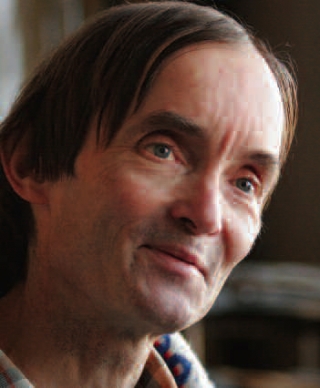 Robert Brandenberger completed his undergraduate degree at the ETH Zurich, in Switzerland, and went on to receive his Ph.D. from Harvard University. He was a postdoctoral fellow in the group of Stephen Hawking at the DAMTP at Cambridge University. He also did postdoctoral work at the Institute for Theoretical Physics, University of California, Santa Barbara. Professor Brandenberger joined the faculty of Brown University in 1987 and then in 2004, he joined McGill University where he is a Canada Research Chair (Tier 1) holder. He is also an affiliate member of the Perimeter Institute for Theoretical Physics. Brandenberger is a theoretical cosmologist who has made many contributions to the theory of cosmological perturbations and to the theory of reheating after a period of cosmological inflation. With colleague Cumrun Vafa he initiated the study of superstring cosmology. The model of “String Gas Cosmology” which they developed is an alternative to inflationary cosmology. Professor Brandenberger has also done a lot of work on cosmological signatures of cosmic
Robert Brandenberger completed his undergraduate degree at the ETH Zurich, in Switzerland, and went on to receive his Ph.D. from Harvard University. He was a postdoctoral fellow in the group of Stephen Hawking at the DAMTP at Cambridge University. He also did postdoctoral work at the Institute for Theoretical Physics, University of California, Santa Barbara. Professor Brandenberger joined the faculty of Brown University in 1987 and then in 2004, he joined McGill University where he is a Canada Research Chair (Tier 1) holder. He is also an affiliate member of the Perimeter Institute for Theoretical Physics. Brandenberger is a theoretical cosmologist who has made many contributions to the theory of cosmological perturbations and to the theory of reheating after a period of cosmological inflation. With colleague Cumrun Vafa he initiated the study of superstring cosmology. The model of “String Gas Cosmology” which they developed is an alternative to inflationary cosmology. Professor Brandenberger has also done a lot of work on cosmological signatures of cosmic
strings.
IFT Colloquium
October 10, 2023,
1:45pm in
“What was before the Big Bang?”
According to Standard Cosmology, the universe began at a point of infinite temperature, the Big Bang. A Big Bang is also a feature of inflationary cosmology, the current paradigm of early universe cosmology. However, the physical model which yields the prediction of a Big Bang breaks down before the Big Bang is reached. Hence, do we really know if there was a Big Bang? As I will show, recent developments in theoretical physics shed a new light on these old questions, and even indicate the possibility of obtaining an emergent space-time and early universe cosmology. Furthermore, these ideas are testable in upcoming observations.
Astrophysics / High Energy Seminar
October 11, 2023
2:00pm in
“Searching for Cosmic Strings in New Observational Windows”
Cosmic string solutions exist in a wide class of theories beyond the Standard Model (BSM) of particle physics. If Nature is described by such a theory, then a network of strings will form in the early universe and persist to the present time. Thus, searching for cosmic strings in the sky is a way to probe BSM complementary to accelerator searches. I will discuss searches for cosmic strings in new observational windows, in particular in 21-cm surveys. In addition, cosmic strings may explain the origin and abundance of high redshift supermassive black holes and galaxies.